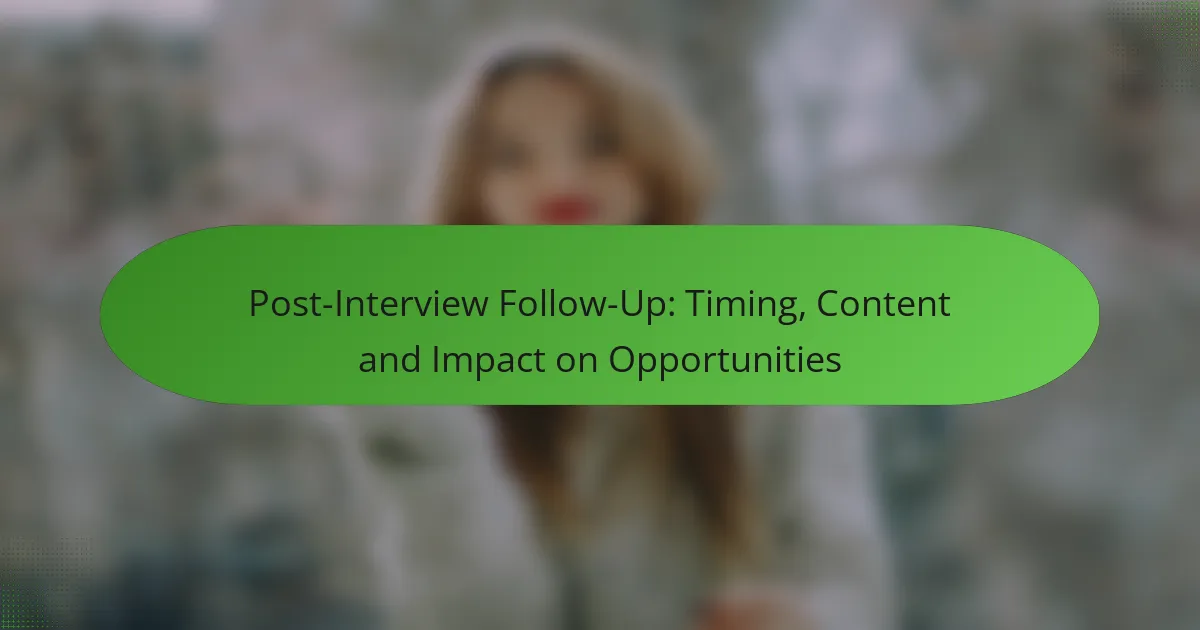Following up after an interview is a crucial step in the job application process, ideally occurring within 24 to 48 hours. This timely communication allows you to express gratitude, reaffirm your interest, and address any unanswered questions, showcasing your professionalism. A thoughtful follow-up can significantly enhance your chances of securing the position by distinguishing you from other candidates.
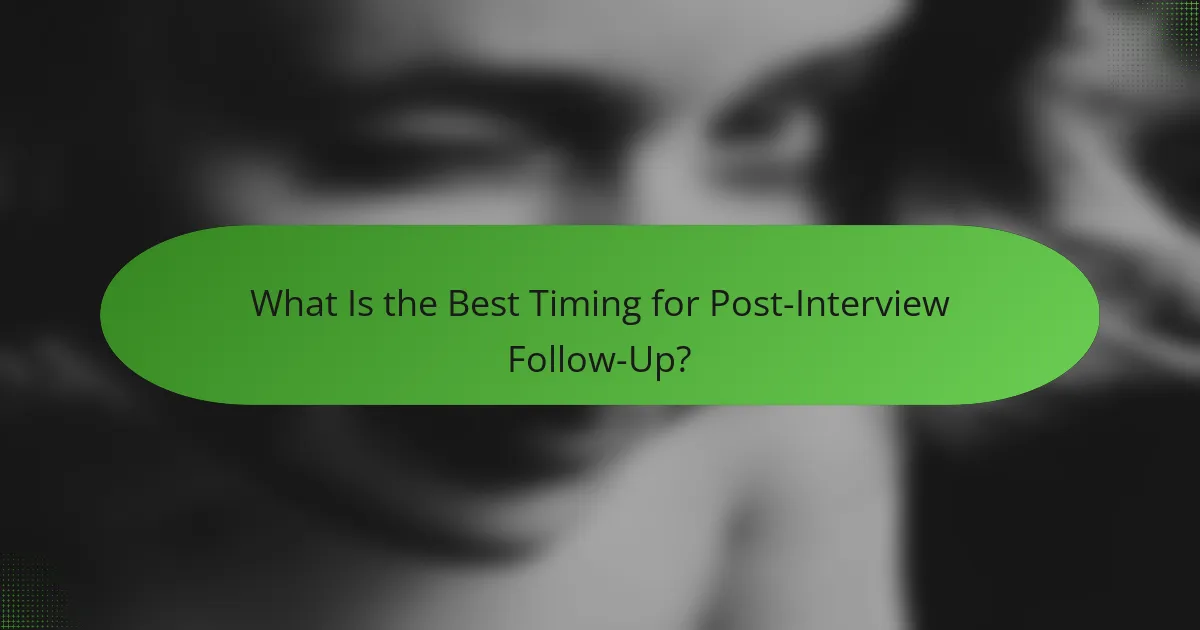
What Is the Best Timing for Post-Interview Follow-Up?
The best timing for post-interview follow-up is typically within 24 to 48 hours after the interview. This timeframe allows you to express gratitude while the interview is still fresh in the minds of the hiring team.
24-48 hours after the interview
Sending a follow-up message within 24 to 48 hours shows your enthusiasm and professionalism. This promptness can set you apart from other candidates who may delay their responses.
In your message, briefly thank the interviewer for their time and reiterate your interest in the position. A concise note can leave a positive impression and keep you top of mind.
Consider the company’s hiring timeline
Understanding the company’s hiring timeline is crucial for effective follow-up. If the organization has indicated a specific timeframe for making decisions, align your follow-up accordingly.
For instance, if they mentioned they would decide within a week, wait until that period has passed before reaching out. This demonstrates respect for their process and patience.
Follow up on specific dates mentioned
If the interviewer provided specific dates regarding next steps or further communication, use those as your guide for follow-up. Acknowledging these dates shows you were attentive and engaged during the interview.
For example, if they said they would contact candidates by Friday, consider sending a follow-up email the following Monday if you haven’t heard back. This approach can help you stay proactive without appearing pushy.
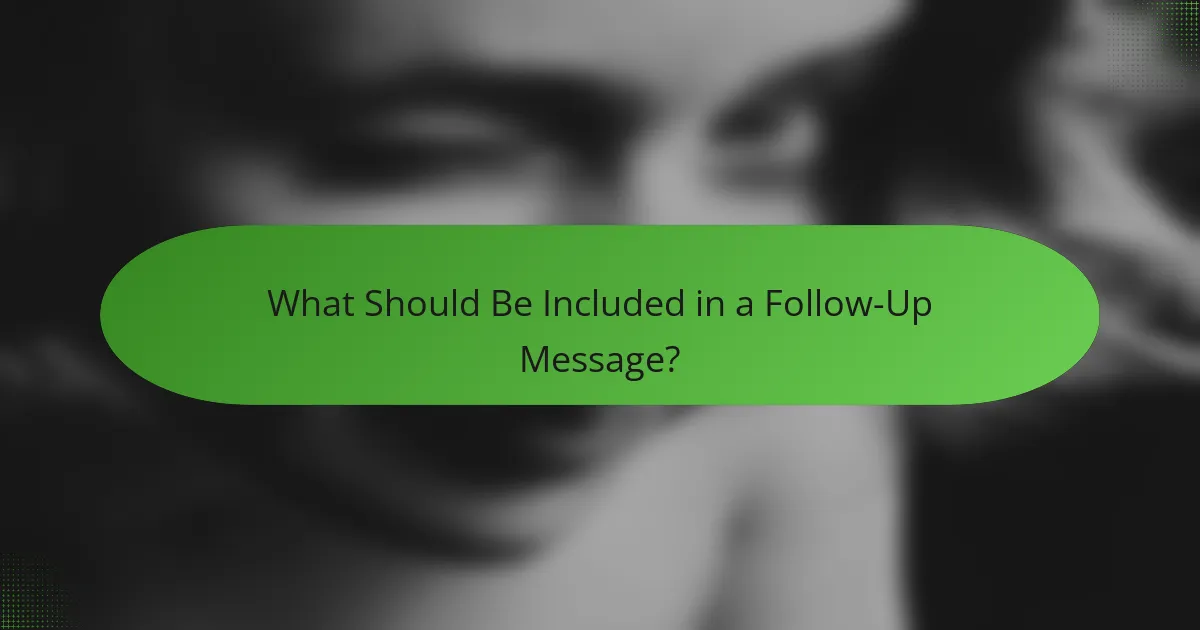
What Should Be Included in a Follow-Up Message?
A follow-up message after an interview should include gratitude for the opportunity, a reaffirmation of your interest in the position, and any responses to questions that were left unanswered. This approach not only shows professionalism but also reinforces your candidacy.
Thank you note for the opportunity
Start your follow-up by expressing appreciation for the interviewer’s time and the chance to discuss the role. A simple thank you can go a long way in leaving a positive impression. For example, you might say, “Thank you for the opportunity to interview for the Marketing Manager position. I enjoyed our conversation and learning more about your team.”
Reiterate interest in the position
Clearly state your enthusiasm for the role and the company. This is your chance to remind the interviewer why you are a good fit. You could mention specific aspects of the job or company culture that excite you, such as, “I am particularly drawn to your innovative approach to marketing and would love to contribute to your upcoming projects.”
Address any unanswered questions
If there were any questions during the interview that you couldn’t fully address, take this opportunity to provide thoughtful responses. This demonstrates your commitment and attention to detail. For instance, you might say, “I wanted to elaborate on my experience with digital marketing strategies, as I believe it aligns well with your current initiatives.”

How Does Follow-Up Impact Job Opportunities?
A well-timed follow-up can significantly enhance job opportunities by demonstrating your interest and professionalism. It reinforces your candidacy and can set you apart from other applicants in a competitive job market.
Shows professionalism and enthusiasm
Sending a follow-up message after an interview signals to employers that you are serious about the position. It reflects your professionalism and genuine enthusiasm for the role, which can leave a positive impression.
Consider sending a thank-you email within 24 hours of the interview. This promptness shows respect for the interviewer’s time and keeps you fresh in their memory.
Helps reinforce candidate’s fit
A follow-up provides an opportunity to reiterate your qualifications and how they align with the company’s needs. You can mention specific points discussed during the interview that highlight your suitability for the role.
For example, if you discussed a particular project, you can follow up by sharing relevant experiences or insights that further demonstrate your fit. This can strengthen your case as a top candidate.
Can differentiate candidates in competitive markets
In a competitive job market, a thoughtful follow-up can set you apart from other candidates who may not take this extra step. It shows initiative and a proactive approach to your job search.
To maximize impact, personalize your follow-up by referencing specific aspects of the interview or the company culture. This tailored approach can make a lasting impression and enhance your chances of being remembered positively.
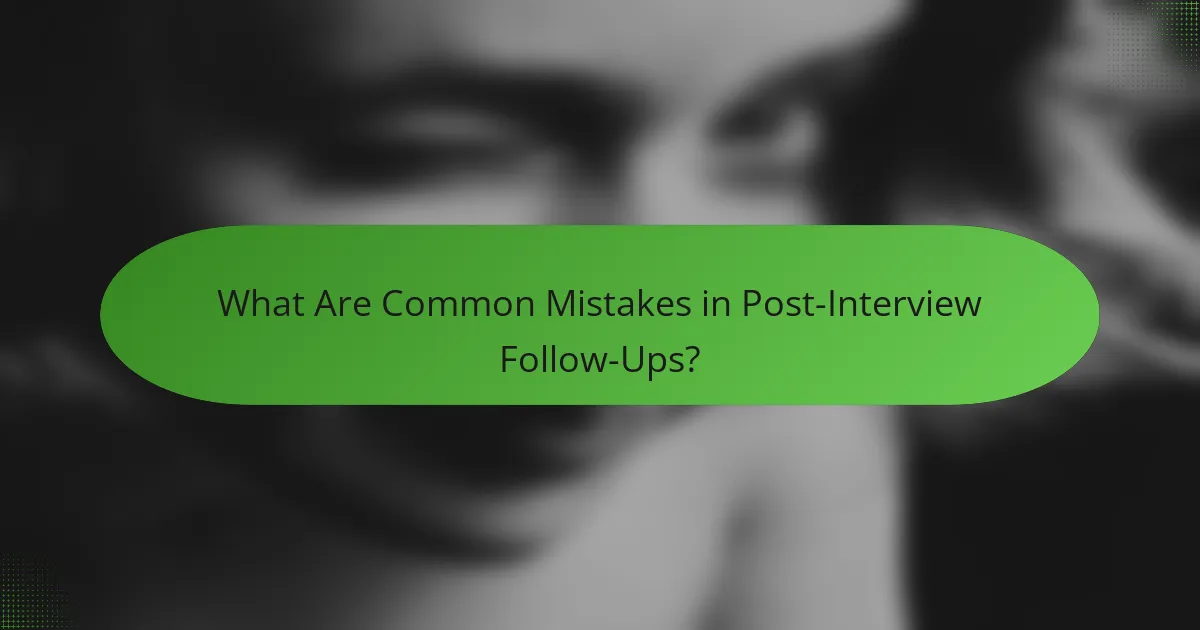
What Are Common Mistakes in Post-Interview Follow-Ups?
Common mistakes in post-interview follow-ups can hinder your chances of securing a job. Key errors include being overly aggressive, sending generic messages, and neglecting to proofread for errors.
Being too pushy or aggressive
Being too pushy in your follow-up can create a negative impression. Instead of demanding updates or expressing frustration over delays, aim for a polite and respectful tone.
Avoid sending multiple messages in a short time frame. One well-timed follow-up, typically within a week after the interview, is sufficient to show your interest without overwhelming the hiring manager.
Sending generic messages
Generic messages can signal a lack of genuine interest in the position. Tailor your follow-up to reflect specific points discussed during the interview, demonstrating your engagement and enthusiasm.
For example, mention a particular project or value that aligns with your skills. This personalized approach can make your follow-up stand out among others.
Failing to proofread for errors
Errors in your follow-up message can undermine your professionalism. Typos or grammatical mistakes may suggest a lack of attention to detail, which is crucial in most roles.
Before sending your message, take a moment to review it carefully. Reading it aloud or using a grammar-check tool can help catch any mistakes that might detract from your message’s clarity.
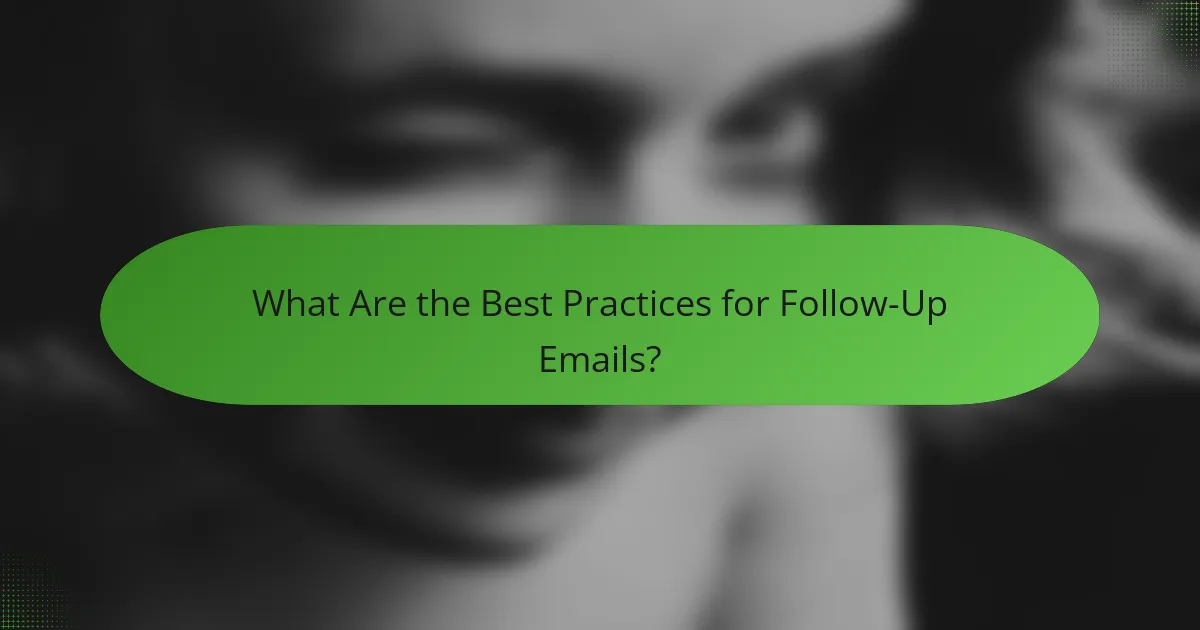
What Are the Best Practices for Follow-Up Emails?
Effective follow-up emails can enhance your chances of securing a job after an interview. Key practices include personalizing the message, maintaining brevity, and using a professional tone.
Personalize the message
Personalizing your follow-up email shows genuine interest and helps you stand out. Reference specific topics discussed during the interview or mention something unique about the company that resonates with you.
For example, if the interviewer shared insights about a recent project, you might say, “I was particularly intrigued by your team’s approach to the XYZ project.” This demonstrates that you were engaged and attentive.
Keep it concise and focused
A concise follow-up email respects the recipient’s time and keeps your message clear. Aim for a few short paragraphs that express gratitude, reiterate your interest, and highlight key points from the interview.
Limit your email to around 100-150 words. This ensures that your main points are easily digestible, making it more likely that the interviewer will read the entire message.
Use a professional tone
Maintaining a professional tone in your follow-up email is crucial for leaving a positive impression. Use formal language and avoid slang or overly casual expressions.
Start with a polite greeting and end with a courteous closing. For instance, “Thank you for the opportunity to interview for the position. I look forward to the possibility of working together.” This reinforces your professionalism and enthusiasm for the role.
